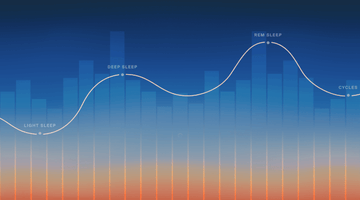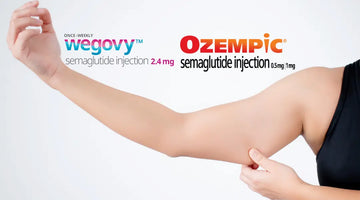Building muscle mass is one of the 4 most common reasons for hitting the gym. Lots of myths and misconceptions abound, based on pseudo-scientific principles that have been passed down from generation to generation. The problem with these principles is that they can end up delivering sub-par or haphazard results that can leave athletes demotivated or even injured in the long run.
If you're struggling to see tangible changes in your physique, it may be because you're not using the right strategies. You may be dedicated – going to the gym and training really hard – but if you're not training according to the correct principles, don’t be surprised if your body never changes.
Related: How Can I Make Sure I'm Building Muscle
Muscle building is a slow process that takes time; it doesn't happen overnight and involves many factors. Competitive bodybuilders will spend the majority of their year in this phase, with a comparatively short phase stripping body-fat.
The key thing to recognise is that there are multiple ways to 'stimulate' muscle growth. Once you’ve understood this, it’s vital to figure out which way is going to work best for you. Here are the 6 most important principles to help you design your program:
1. Know your exercise training volumes
In weight training, ‘volume’ describes how much work you do. For instance, the number of repetitions (reps) of each exercise that you perform. Why is this important? It's simple; increased volume over time is proportional to muscle "gainz" over the same time period.
Researchers have used many different approaches to measure volume. One of the most common methods, and the one we will be using, is: Sets x Reps x Load (weight lifted) = Volume.
To maximise muscle growth, you need to create enough volume to reach 'stimulating reps' – the point at which your muscles are fatigued enough to stimulate muscle growth. This can be achieved by doing lots of sets of heavier low-volume training or fewer sets of high-volume lighter training.
Example:
Workout A: Bench Press 3x10x100kg = 3000
Workout B: Bench Press 4x6x125kg = 3000
Chris Beardsley of Strength and Conditioning Research looks extensively into the scientific principles behind how high-performing athletes can use science to improve their training goals and outcomes.
In one of his articles, he breaks down training for hypertrophy or muscle growth. Chris suggests the best method involves 3 sets of 5 reps as this is the most efficient way to achieve the crucial stimulating reps when training to fatigue (see graph below).
"When training for muscle growth, the best way to measure volume is to count only those reps that involve the recruitment of high-threshold motor units while bar speed is slow. We can refer to these as “stimulating reps.”We do not yet know exactly how many reps in each set to failure involve the activation of high-threshold motor units while bar speed is slow, but it is likely to be approximately 5 reps, because 5RM is the boundary between heavy and moderate loads. When lifting loads heavier than 5RM, extra sets will need to be done to compensate for the smaller number of stimulating reps per set. When lifting loads lighter than 5RM, the same number of sets to failure will cause similar muscle growth, regardless of the weight or volume load."

2. Progressive overload
Every bodybuilder and fitness expert seems to have some key training ‘method’ for muscle growth. However, regardless how they package it, there is only one underpinning principle to ensure you keep getting results: Progressive overload. It basically means you should keep making your training more difficult.
Progressive overload relates to the need to keep increasing training volume to force your muscles to adapt and grow. The more you train, the more adapted you become so you have to find ways to increase your volume enough to force consistent muscle-building adaptations. Many people confuse progressive overload for progressively getting stronger, but the load on the bar is only one variable you can manipulate to increase training volume week on week.
The aim is to create the adaptation and chaos in your programme needed to stimulate muscle growth. One way to structure this is to consider using a blend of lower and higher volume-style training methods. For example, training for 4 weeks at lower volumes and then switching the programme to spend 4 weeks at higher volumes. Or change the type of exercises that you do during your session to vary your volume in different muscle groups.
3. Use eccentric overload (aka heavy negatives)
When you train, you can use three main types of muscle action: concentric, isometric or eccentric. These are present in most moves that you perform. Accentuated eccentrics, however, focus your efforts on the part of the exercise involved with lowering the weight.
This type of training stimulates greater strength and size gains than pure concentric training.
Check out this mildly cheesy explainer video. It gives a great explanation of what heavy negatives are and the benefits of paying attention to this part of an exercise. We've set the video to start midway, at the juicy details in case you’re short on time.
Related: 4 building muscle training techniques from Mr Olympia
4. Training to fail
Training to failure is advantageous for muscle growth, so bear this in mind when training.
When training for muscle, volume is not the number of sets or reps that you do. It is the number of stimulating reps that you do. These are not the same thing!
It's only the final reps before muscle failure that really count, i.e. when fatigue is high enough that you can’t do another rep.

5. Recovery and overreaching
All this discussion of increasing volume and training to fail will inevitably mean two things. Firstly, that in order to progress, your recovery is going to need to be on point, including enough rest and the right nutrients. Secondly, at some point when pushing volume, you will ‘overreach’.
Overreaching usually coincides with a reduction of performance in the gym both in terms of strength and ability to increase volume. This will occur at some point in any progressive programme. This is typically around the 8-week mark in experienced trainers. It is due to an inability to recover in short timeframes and the large stress placed on the central nervous system and other important performance and muscle growth regulators.
At this point, you want to take a deload, either resting for a few days or seriously backing off your volume and training far from fatigue. This should allow the body to recover, adapt and grow. Time out of the gym sometimes does more for your muscle growth – and longevity – than time in it!
6. Nutrition and mobility
Alongside implementing the appropriate training mechanisms mentioned above, make sure you have the appropriate nutritional and mobility support principles in place. This will enhance your ability to grow.
Ensure you consume an adequate quantity of amino acids (the building blocks of protein) around training: 2g of amino acids per kilo of bodyweight per day, alongside supplements, can help support your nutrition and ‘fill in the gaps’.
Use 1-2 servings of Amino Recovery during your session and consume enough excess calories to support muscle growth. Aim for a mix of carbohydrates to fuel training and fats for the important roles they play in the body, such as cellular signalling and the production of hormones.
Also, make sure you have a consistent mobility routine. This will mean your tissues are not restricted due to compression because this can massively influence the results you will achieve.
Related: Essential nutrition tips to build lean muscle
Large increases in training volume can also put stress on the immune system, so for those who struggle to eat enough fruit and veg, supplementation with a multivitamin or vitamin C may be beneficial. Other supplements likely to benefit those looking to build muscle include Omega-3/fish oils, magnesium and vitamin D, because many people are deficient and they all play important roles in many physiological functions, from cellular signalling, inflammation control and the production of muscle-building hormones to name but a few!
Related: Why everyone should take Magnesium and Vitamin D






